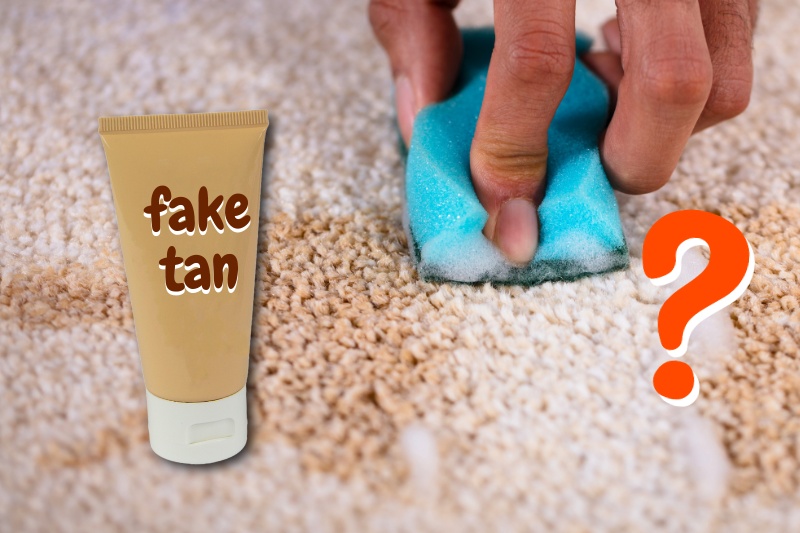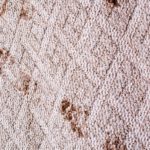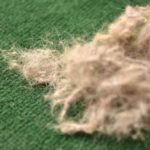Fake tan can work wonders for achieving a sun-kissed glow, but fake tan stains are an inevitable price to pay for getting a bronzed look.
Most of the time, fake tan stains aren’t too much of a problem—bedsheets, towels, and clothes can all be thrown in the wash. But, accidental spills or stains on your carpet can be much more challenging to remove.
If you need to know how to get fake tan out of a carpet, you’re in the right place. Whether you’ve had a tanning mishap or a bottle leak, here we teach you the proper techniques to eliminate these unsightly brown stains for good.
Keep reading for several effective methods you can use today.
How Do You Remove Fake Tan Stains from Carpet?
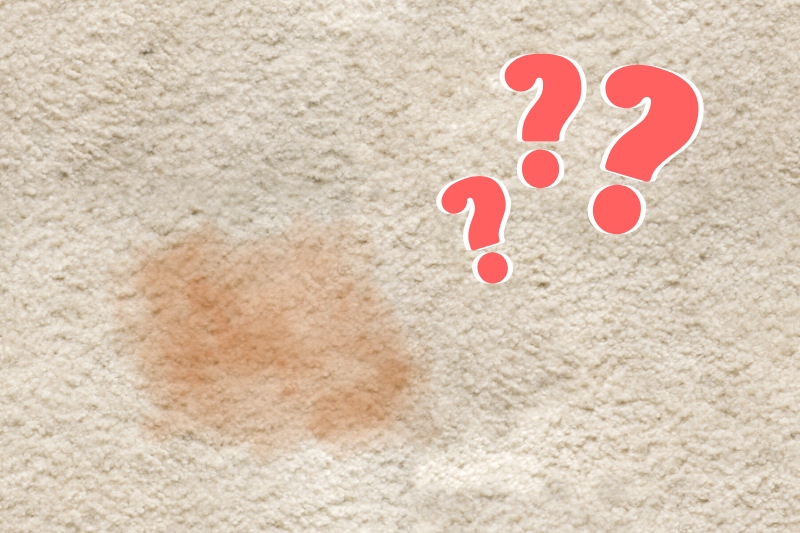
You can use several effective methods to get fake tan out of a carpet. But no matter which you choose, the key to successfully removing fake tan from your carpet is to act promptly.
The longer the stain sits, the more it can set into the carpet fibres, making it harder to remove.
Therefore, as soon as you notice a fake tan stain on your carpet, grab some clean towels or paper towels to blot away as much of the excess tanner as possible.
Ensure you blot rather than rub, as rubbing only pushes the stain deeper into the carpet fibres.
Once you’ve done this, try using one of the tried-and-tested methods below:
Method 1: Use homemade cleaning solutions
If you haven’t got any commercial cleaning products to hand or want to use something more gentle on your carpet, homemade cleaning agents can be used to remove fake tan stains.
Many of these items you already have in your home, your best options being:
- Washing-up liquid
- Bicarbonate of soda
- White vinegar
Option 1: Washing-up liquid and water
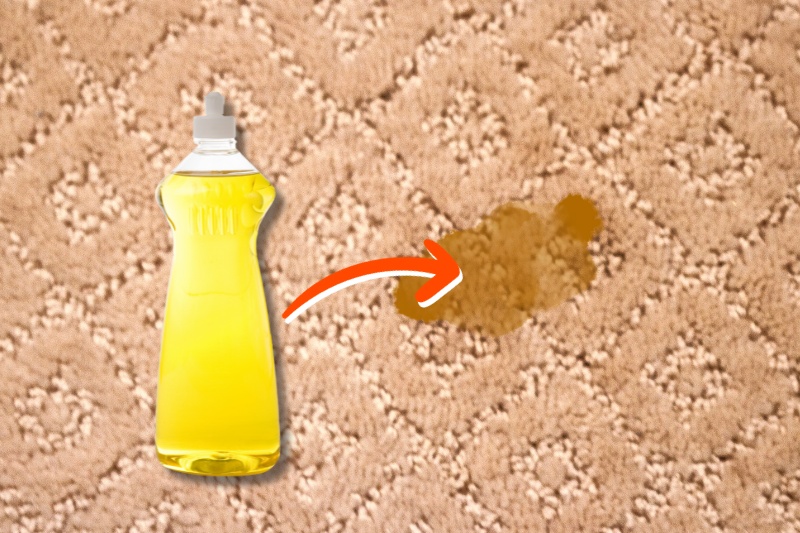
A solution of washing up liquid and water can remove fake tan stains from your carpet. This is one of the most gentle options for cleaning. To try it out, follow these steps:
- Make a solution of one teaspoon of washing-up liquid with two cups of warm water. Ensure that the water is only mildly warm and not hot.
- Dip a soft-bristled brush in the solution and work it into the carpet. Start at the outside edge of the stain and work inwards to the centre to keep the fake tan stain from spreading.
- Use a white towel to blot at the fake tan stage as it is transferred out of the carpet fibres. You should do this repeatedly as more and more of the liquid starts to lift.
- Dip a clean sponge into cold water and blot the carpet, using paper towels to absorb excess moisture. It is essential to ‘rinse’ the area to ensure no soapy solution residue is left behind.
- Allow the carpet to dry completely. Do not use any direct heat to clean the carpet, which can damage the fibres. Instead, allow the carpet to air dry—even if it takes a little longer.
- Once thoroughly dried, use a vacuum cleaner to lift away any carpet fibres that have been matted during the stain-removal process.
Option 2: Bicarbonate of soda (baking soda) and water
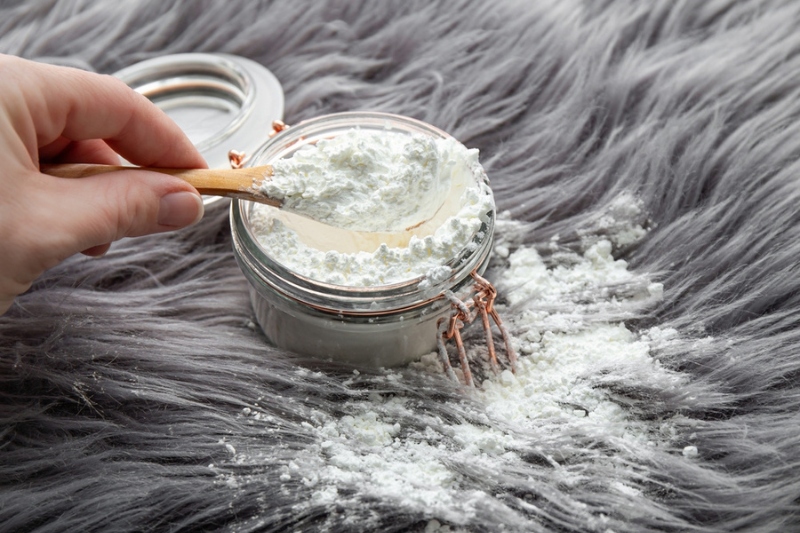
Bicarbonate of soda is a product that is safe and easy to come by, and it has so many uses to clean surfaces and items around a home.
Therefore, bicarbonate of soda is another effective homemade remedy that can be used to remove fake tan stains from carpets. Here’s how:
- Place one cup of bicarbonate of soda into a bowl. Then, wet a clean cloth until damp and dip it into the bowl, coating the fabric in bicarbonate of soda.
- Find a testing area out of sight and gently press the bicarbonate of soda-coated cloth onto this area. This will allow you to assess the suitability of using bicarb on your carpet.
- If there is no sign of damage to the carpet fibres, you can go ahead and treat the stain. Gently press the coated cloth onto the fake tan stain, covering the area in baking soda.
- Leave the carpet for a couple of minutes (up to 10 minutes) whilst the bicarbonate of soda works its magic. It will absorb the fake tan and lift it from the fibres.
- Rinse the area with a new cloth dipped in cold water, blotting at the stained area. Use a clean white towel or paper towels to soak up any excess bicarbonate of soda and water.
- Leave the carpet to air dry naturally. Once the carpet has dried, use a vacuum cleaner to remove any remaining bicarbonate of soda from the fibres.
It can be tempting to scrub hard on the stained carpet area. However, this can cause damage to the fibres, especially with the added abrasion of the powder.
Therefore, it is essential to be patient when using this method—repeat the process if needed rather than being more heavy-handed.
Option 3: Distilled white vinegar and water

Vinegar is another useful tool for cleaning carpets and rugs made from synthetic materials. However, it is important not to apply vinegar to natural fibre designs as it may be too harsh.
Assuming you have a synthetic carpet, use the following steps to try this method:
- Start by mixing equal parts of water and white vinegar in a clean spray bottle.
- Conduct a patch test on a hidden bit of carpet to check that vinegar doesn’t react badly with the carpet. Continue with the method only if the test is okay.
- Spray the fake tan-stained area with the water-vinegar solution. Leave the solution on the stain for 10 minutes before blotting the area with a clean, damp cloth.
- Repeat step 3 as many times as necessary until the stain stops transferring to the cloth. This indicates that all the fake tan has been lifted from the fibres.
- Rinse the carpet area with a sponge dipped in cold water and use a clean white towel or white paper towels to soak up any excess water.
- Leave the carpet to air dry and open some windows to remove any lingering vinegar smell.
Method 2: Commercial stain removers
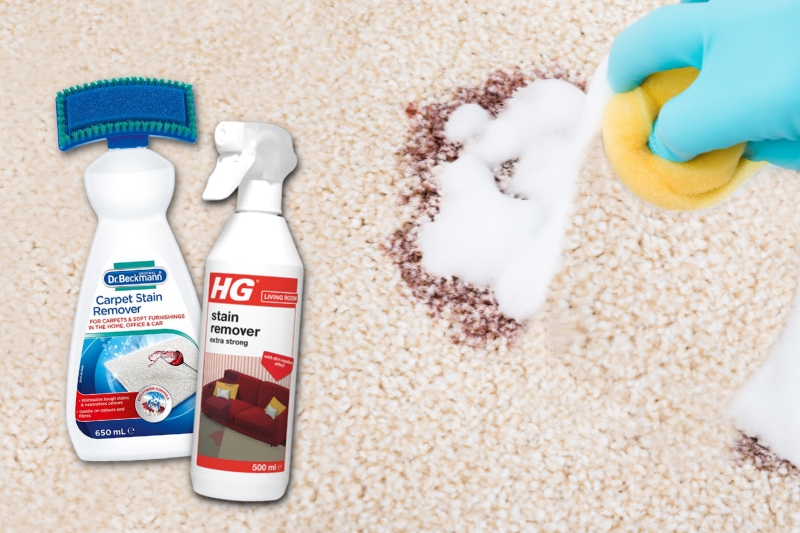
If the stain persists after attempting the homemade solutions, consider using a commercial stain remover designed explicitly for carpets. Below are our two favourite options:
- HG Stain Remover Extra Strong Carpet & Upholstery Stain Spray – This solution is easy to use and works in minutes, penetrating deep into the fibres to remove any fake tan-induced stains. It comes with oxygen-based bleaching agents.
- Dr. Beckmann Carpet Stain Remover – Another cleaning product containing oxygen-based bleaching agents, this solution comes in a bottle with a brush head so that you can work the formula carefully into your stained carpets and rugs.
When using these products, always follow the product instructions carefully and test the solution in a hidden area of the carpet first to ensure it won’t cause any damage.
Method 3: Use a carpet cleaner
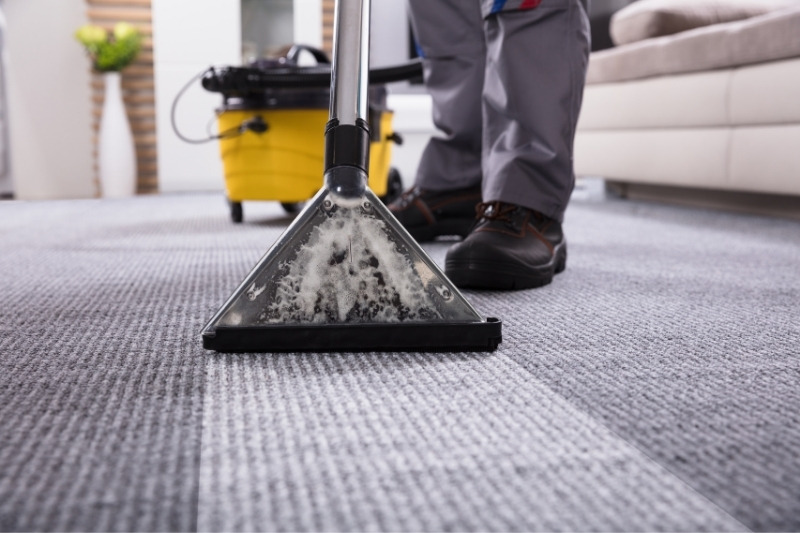
If you’ve treated your carpet and the fake tan stain is nearly gone, a final step to consider is a thorough carpet cleaning using a carpet cleaner.
This deep cleaning step can help ensure any remaining traces of the stain are effectively removed, leaving your carpet looking fresh and stain-free.
You have to rent a carpet-cleaning machine for a day or so, purchase a carpet cleaner for continued home use, or pay a professional carpet cleaning company to do the job for you.
- Renting a carpet cleaner: Renting is the most affordable of the three options. One popular choice for renting is a RugDoctor, which can be acquired directly from the company or various retailers like B&Q, Morrisons, Timpson, or The Range. For detailed insights into the rental process and associated costs, you can visit the RugDoctor website.
- Purchase a carpet cleaner: Purchasing a carpet cleaner is more of an investment, but you will have the appliance for life. If you constantly struggle with stained carpets, it is a worthwhile investment. You can also find budget carpet cleaners like our top-rated Vax ECR2V1P Dual Power Pet Advance Cleaner.
- Professional service: Professional carpet cleaning isn’t generally cheap. However, while it can be costly, it offers a thorough and efficient cleaning process. The investment is justified, especially if you have a delicate carpet, numerous stubborn stains, or multiple carpets and floors requiring simultaneous cleaning.
If you decide to enlist the help of professionals, don’t hesitate to ask many questions to ensure you fully understand the process.
Additionally, inquire about any necessary preparations for the room before the cleaning professionals arrive.
Moving furniture can be laborious, so if prepping the space is required, make sure to do so in advance to streamline the process.
Are Fake Tan Stains Permanent on Carpets?
Fake tan can cause permanent stains, but their persistence depends on how promptly and effectively you address them.
The pigments in certain fake tanning products act as a dye, which can permanently colour your carpet fibres.
Therefore, it is always better to remove a fake tan stain from a carpet as quickly as possible, treating the area before the dye pigments have time to set in.
If left untreated for an extended period, the fake tan stain can become more challenging to remove completely.
Here are some other tips to keep in mind for the best chances of success:
- Don’t rub: During cleaning, make sure that you don’t rub the stain. Always use a blotting motion instead—this protects the fibres and reduces the risk of the stain spreading outwards.
- Repeat if necessary: Be prepared to repeat the cleaning steps several times. Fake tan can be a persistent stain and often takes more than one treatment to make the marks disappear.
- Avoid colour transfer: Opt for a clean, white cloth or towel to prevent colour transfer during the blotting process. You can also visually see how much tan is transferred onto the towel, giving you a better indication of when the stain has been successfully removed.
- Test first: Before using any cleaning solution(s) on your carpet, test it on an inconspicuous area to ensure it doesn’t cause discolouration or damage.
- Keep children and pets away: Take care when cleaning fake tan stains out of your carpet so that any children or animals are kept away from the carpet whilst it is being treated.

Hannah has a passion for cleaning. She worked her way around Australia by cleaning hostels in exchange for free accommodation and used her cleaning skills to bag a job as a chalet host for a luxury ski company in France.
